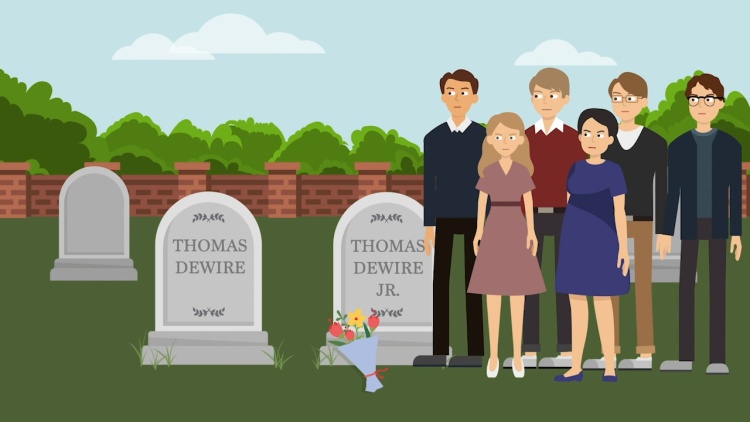Dewire v. Haveles
Massachusetts Supreme Judicial Court
534 N.E.2d 782, 404 Mass. 274 (1989)

- Written by Christine Raino, JD
Facts
Thomas A. Dewire’s will devised most of his estate in trust. The trust paid the income to his widow for life, and on her death, to his son, Thomas A. Dewire, Jr. and his family. Under the terms of the trust, the net income of the trust would continue to be paid to Thomas Sr.’s grandchildren in equal shares until the trust terminated twenty-one years after the death of his last surviving grandchild. Upon termination, the trust principal was to be distributed in equal shares to his grandchildren’s descendants. At the time of Thomas Sr.’s death, Thomas Jr.’s family consisted of his wife and three children, but Thomas Jr. had three more children with a second wife after Thomas Sr.’s death. As a result, since two of Thomas Sr.’s grandchildren were born after the trust came into being upon Thomas Sr.’s death, the rule against perpetuities is violated because one of these later-born grandchildren could be the last to die. When Thomas Jr. died, he was survived by all six children. His son, Thomas III died nine years later leaving a widow and one child, Jennifer. Since the will did not expressly provide for payment of income to the descendants of deceased grandchildren while the trust income was being paid to the surviving grandchildren, the question arose as to whether Thomas III’s one-sixth share of the trust income should be paid to his estate or the income should be divided equally between the surviving five grandchildren. Additionally, the trust did not indicate a beneficiary to receive the trust income between the time when the last income beneficiary dies and the trust terminates twenty-one years after that beneficiary’s death. In an action seeking declaration of rights under the trust, Jennifer argued that she is entitled to receive her father’s one-sixth share of the net income of the trust.
Rule of Law
Issue
Holding and Reasoning (Wilkins, J.)
What to do next…
Here's why 899,000 law students have relied on our case briefs:
- Written by law professors and practitioners, not other law students. 47,000 briefs, keyed to 994 casebooks. Top-notch customer support.
- The right amount of information, includes the facts, issues, rule of law, holding and reasoning, and any concurrences and dissents.
- Access in your classes, works on your mobile and tablet. Massive library of related video lessons and high quality multiple-choice questions.
- Easy to use, uniform format for every case brief. Written in plain English, not in legalese. Our briefs summarize and simplify; they don’t just repeat the court’s language.





